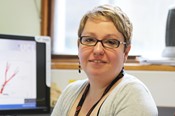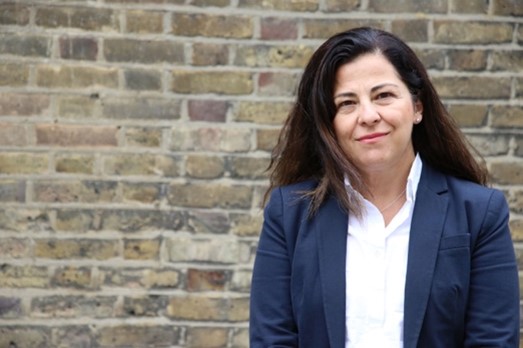题目:An Engineered-Power Vision to Enable Precision Vascular Surgery Using Digital and Physical Twins/Harnessing Fluid Dynamics to Advance Global Health
时间:2025年5月30日 9:30-11:00
地点:意大利贵宾会 F310会议室
邀请人:王东 副教授(机器人研究所)
报告题目:An Engineered-Power Vision to Enable Precision Vascular Surgery Using Digital and Physical Twins
报告人:Prof. Vanessa Diaz
Biography

Vanessa is Professor of Healthcare Engineering at University College London and is the lead of the group 'Multiscale Cardiovascular Engineering' (MUSE). Our group specialises in ‘precision vascular interventions’, using cutting-edge ‘Digital and Physical Twins’ to create patient-specific models—both in vitro and in silico—derived from invaluable in vivo data. This personalised approach allows us to push the boundaries of treatment, ensuring that every intervention is tailored precisely to each patient's unique needs.
Vanessa herself has been the recipient of several Fellowships and Prizes, and her work has been funded by UK charities, UK Research Councils, The European Commission, Hospitals and Industry.
She is also the mum of a very active and spirited child.
Abstract
In this talk, we introduce a novel framework for precision vascular surgery that integrates cutting-edge in vivo imaging, in silico simulation, and in vitro testing to accurately quantify the haemodynamics of complex vascular pathologies and support personalised treatment planning. At the core of this approach is the creation of both a digital twin—a high-fidelity, patient-specific computational model—and a physical twin—a 3D-printed, experimentally validated phantom. These twins are used together on a bespoke haemodynamic testing platform, bridging the gap between simulation and real-world validation.
To showcase the potential of this fully generalisable technology, we will focus on a challenging and highly individualised condition: chronic Type-B aortic dissection. We demonstrate how clinical imaging data is transformed into digital and physical twins to overcome key barriers in the clinical and industrial translation of personalised vascular interventions.
Finally, we will present more broadly the work of our group for other pathologies including arteriovenous malformations, arteriovenous fistulas and grafts, vascular remodelling problems and models of the cardiorespiratory system.
报告题目:Harnessing Fluid Dynamics to Advance Global Health
报告人:Prof. Stavroula Balabani
Biography

Stavroula Balabani (FIChemE, Professor of Fluid Mechanics) obtained a Chemical Engineering degree from the National Technical University of Athens (NTUA, Greece) and a PhD from King’s College London where she started her academic career. She joined UCL in 2011 where she leads an experimental fluid mechanics group (FluME), applying high resolution, optical diagnostic techniques to probe complex flows and transport phenomena, both at the macroscale and microscale, with applications to healthcare, energy and manufacturing. Her current research interests evolve around complex fluids in healthcare formulations, viscoelastic instabilities and elastoinertia turbulence, vascular flows, fluidics for novel targeted drug delivery and diagnostics to personalise therapeutic interventions. Stavroula is a member of the Executive Committee of the International Microflows Nanoflows conference (MNF), the Osborne Reynolds Day Scientific Committee and serves as an Associate Editor for Medical Engineering and Physics.
Abstract
Despite advances in healthcare technologies, ensuring health and well-being for all still remains a challenging task. The talk will demonstrate how we can harness fluid dynamics across the scales to address healthcare challenges. It will provide an overview of the application of in vitro tools (physical twins and laser based diagnostics) to understand the haemodynamics of complex vascular pathologies, such as aortic dissection. This will be followed by our work on microscale flows -utilising microfluidics - to shed light into microhemodynamics, develop point of care diagnostics and optimise therapeutic interventions. Finally, and time permitting, some recent experimental work in oral formulations and dental interventions aiming to optimise antimicrobial therapies will be presented.

